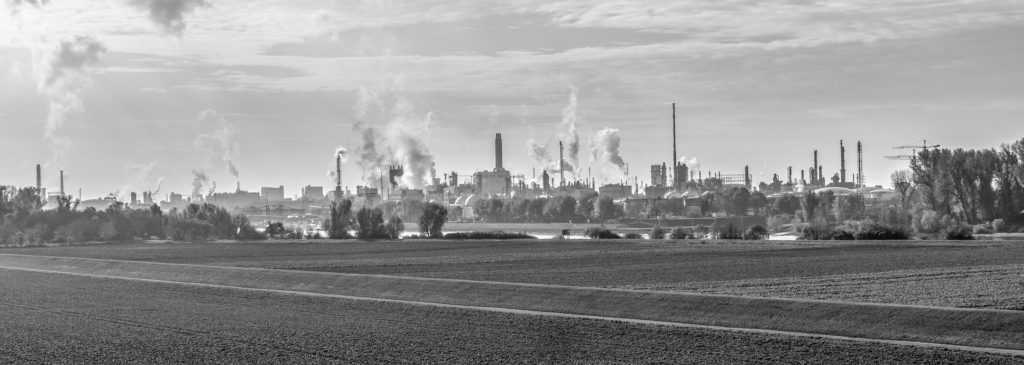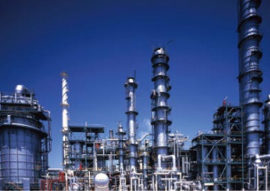
5 Louisiana chemical plants are producing less of the cancer-causing chemicals that were expected improving the health of residents by putting less harmful elements in the air. It depends on how you look at it – I prefer the less theory.
Five Louisiana chemical plants that have been regulators’ microscope are producing significantly less of a cancer-causing chemical than estimated in previous years, reducing health risks, the EPA is telling residents of nearby communities. The plants are in the Mississippi River corridor between Baton Rouge and New Orleans and near Lake Charles. Federal regulators have raised alarm about their air emissions, particularly ethylene oxide, which is known to increase cancer risk. But, in recent years, the plants have either improved their equipment and processes to reduce those emissions or developed new calculations showing the emissions aren’t as bad as previously feared, the regulators say. Still, only two of the five facilities — the Taminco Inc. and BCP Ingredients facilities in St. Gabriel — meet the EPA’s safety standard: Less than 100 additional cancer cases per 1 million people. The other three, Evonik Corp. in Reserve, Union Carbide near Hahnville and Sasol Chemicals in Westlake, have cancer risk levels that remain two to six times greater than that minimum safe level, even after the emissions reductions, the EPA says.
theadvocate.com
Yes, the news is improving but still not good. The rosy headline is tarnished. The cancer causing carcinogens are still in the air and in doses above approved levels.
Ethylene oxide is used to sterilize medical equipment and is part of the production process for consumer products ranging from detergents to cosmetics to plastic pipes. In December 2016, EPA scientists found ethylene oxide was 30 times more carcinogenic to adults and 60 times more carcinogenic to children than earlier believed. The agency created a stringent standard for acceptable levels of the chemical in the air: no more than 0.1 parts per trillion. In August 2018, new, localized cancer risk data from the EPA’s National Air Toxics Assessment for the first time incorporated the higher cancer risk values with annual emissions data from major industries. The data revealed striking cancer risk levels around the five facilities in Louisiana and elsewhere in the river corridor. The risk findings were immediately controversial. The NATA data also were contested as out of date and not reflective of actual cancer incidences in the region that are generally close to the state average. Released every few years, NATA data have a lag. The 2018 report relied on 2014 air emissions.
A four year lag in reporting seems far too long. Besides, the oil producing states object to any standard.
Industry groups have challenged the risk levels as vastly inflated, citing a Texas Commission on Environmental Quality critique of EPA’s work that led to a Texas standard that is nearly 2,400 times weaker than the EPA’s. The Texas authority says the EPA standard would be well below existing background levels in the atmosphere. Meanwhile, environmental and community groups have criticized the EPA, saying it is not moving fast enough to apply the risk standard in new emissions limits. The EPA’s internal auditor has faulted the agency for being too slow to inform local communities about their risk. The five Louisiana plants were among 25 nationwide that the EPA Inspector General deemed “high priority” for public discussion because of their high risk levels. Amid this back and forth and pressure to act, the Louisiana facilities have seen ethylene oxide air emissions reductions of around 50% to 99% between 2014 and 2018.
The risks have dropped but what bout illness and deaths? They also lag the effect of the chemicals.
Cancer risk levels have fallen apace. Those risk reductions range from nearly 30% to 99% between 2014 and 2018, EPA data show. EPA deems 100 or more additional cancer cases above normal out of 1 million people as an unacceptable risk that merits close scrutiny. The standard is a lifetime one, assuming 70 years of daily, 24-hour exposure to a toxic chemical. The new lower risk assessments have come to light in new reports from EPA and virtual community meetings this month. But EPA officials have offered few details so far about how Union Carbide and the two other remaining companies would gain further reductions to bring the cancer risk to safer levels, though the companies and EPA have promised to do so. The Union Carbide plant cut ethylene emissions by about 63% between 2014 and 2018. That reduction led to a 58% cut in the cancer risk immediately around the plant in Taft near Hahnville, the EPA says.
The risk may be down but it they are still producing above EPA standards the risk is raised.
But, even with the emissions cut, the cancer risk remains at 700 additional cancer cases in every 1 million people, six times more than the minimum acceptable level of 100-in-1 million cases. “EPA finds that this risk is not sufficiently protective of human health, and we will be working with Union Carbide and LDEQ to evaluate ways to reduce emission of ethylene oxide,” Francis Verhalen, supervisor of the air monitoring and grants section at EPA Region 6 in Dallas, Texas, told residents Thursday in a virtual meeting. The Thursday meeting prompted a variety of questions from residents and activists about how the EPA and Union Carbide reached their conclusions. In St. Gabriel, some residents who listened in on and spoke at that briefing earlier this month said they were skeptical of the reductions. They called for direct air monitoring of the plants to verify industry data and get to the bottom of cancer deaths in the area. “You know they say they reduce them. We don’t know if they reduce them or not because they self-report,” said Reginald Grace, a retired state worker from St. Gabriel and local activist. “But the thing is, if we lose one or two people, three people to cancer and you don’t know what the root cause of it is, it’s not good, you see?”
I agree, let us see real time monitoring through direct air monitoring and put is on a public website for all to see.
In responses to questions Thursday night, Verhalen said EPA didn’t have legal authority to require direct fence-line air monitoring but used standard procedures to quality-check Union Carbide’s and other submitted emissions figures. In a report for EPA, Union Carbide said it found emissions reduction through the addition of a new scrubber and other equipment and the realization that past emissions figures for some tanks and a flare were overestimated. Taminco and BCP Ingredients saw the largest emissions reductions among the five Louisiana plants, 93% and 99% between 2014 and 2018. Cancer risk levels from the St. Gabriel plants had been 12 to 24 times higher than 100-in-1 million cancer risk threshold and fell to more than twice to 8 times lower than the same threshold, EPA data show. Taminco’s reductions stemmed purely from a revaluation of its highly conservative emissions calculations submitted annually to EPA. The company found, for instance, that after a stack test, a scrubber’s efficiency at removing ethylene oxide was nearly 2 percentage points higher than assumed. “In short, our permitted EO emissions are not now and never have exceeded EPA’s predicted cancer risk value for EO,” said Amanda Allman, a spokeswoman for Eastman Chemical Co., the corporate parent of Taminco. Taminco expects a small increase in ethylene oxide emissions in 2020 that won’t materially affect the risk ratings. BCP Ingredients not only refined its emission calculations but also installed an updated ethylene gas scrubber and started a leak detection and repair program, an EPA report says.
It seems that some are trying to improve by installing equipment while other want to fudge the numbers. This is why we need a central enforcement agency and since Louisiana prides itself on being an oil state I wonder about the state environmental agency.
Overall, ethylene oxide emissions from all 14 Louisiana plants releasing the gas have fallen more than one-third between 2014 and 2019, but, in 2019, the state remained the nation’s second largest emitter of chemical in the air, the latest EPA data show. Louisiana has also authorized new ethylene oxide emissions from a $9.4 billion Formosa Plastics complex proposed in St. James Parish. The plant could eventually replace nearly 70% of that five-year, statewide reduction, air permits show.
Trust but verify. I doubt if there is trust for these plants and continued and improved monitoring is needed. This is shown by the glowing headlines of this article that then showed that all is not well.



